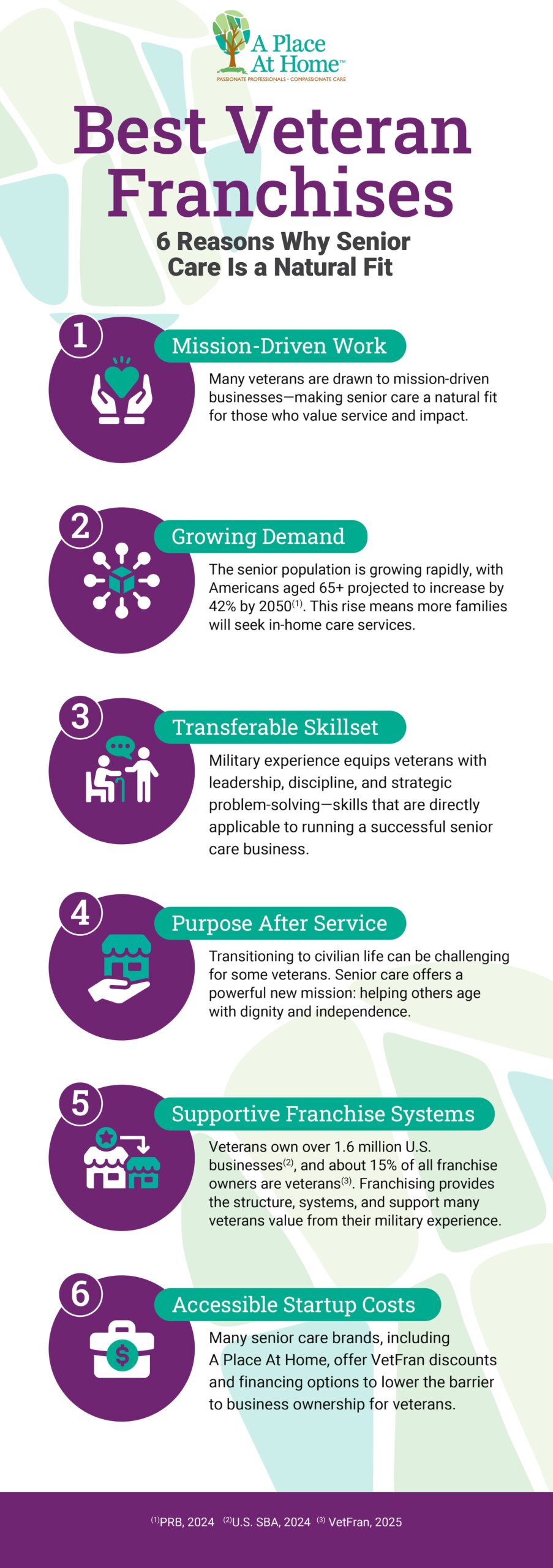TOWSON, Md. – (Feb. 13, 2025) – A Place At Home, a senior-focused home care provider franchise, is proud to announce the opening of its first Maryland location in Towson. Franchise owners Yemi Adebisi and Adedayo Ojo, both first-generation Nigerian Americans, are leading this milestone expansion during Black History Month.
Adebisi and Ojo’s personal experiences with aging loved ones fuel their commitment to non-medical in-home care. Ojo remembers the stark contrast between his parents’ experiences—his father’s health declined rapidly, leading to his passing. While his mother, despite a terminal pancreatic cancer diagnosis, lived six unexpected years beyond her prognosis. He credits the quality home care she received for that extended time.
“Seeing how my mother lived those extra years with proper care and support from family and caregivers opened my eyes to how essential home care is,” Ojo said. “You have to do all you can so your loved ones receive the care and dignity they deserve.”
Additionally, Adebisi’s grandmother lived until she was 102 with the help of professional and family care, reinforcing Adebisi’s understanding of the importance of aging in place.
A Place At Home – Towson will provide comprehensive senior-focused care services, including in-home care, care coordination, assistance finding senior living alternatives, and staffing solutions for senior care facilities. These services allow seniors to maintain independence and improve their quality of life. The new location will open this month and serve Towson, Cockeysville, Parkville, Nottingham, and the surrounding communities.
“This is more than a business for us—it’s our passion to serve the community and enhance the lives of seniors,” said Adebisi. “Our goal is to provide the same level of care we would want for our own loved ones, ensuring they age with dignity, comfort, and the support they deserve.”
Adebisi and Ojo recognize the disparities in care for the Black community and hope to bridge that gap. Recent research shows that home care services and aging in place allow for earlier detection of illness, faster treatment, and better care, leading to longer, healthier lives for seniors. Studies also indicate that home care services significantly improve the physical, mental, emotional, and social well-being of older adults.
“Yemi and Adedayo embody the values that drive our franchise—compassion, professionalism, and a deep commitment to serving their community,” said Jerod Evanich, co-founder and president of A Place At Home. “Their leadership will undoubtedly have a lasting impact on seniors and their families in the Towson area and beyond.”
For more information about franchising with A Place At Home, visit aplaceathomefranchise.com.
###
About A Place At Home
A Place At Home offers a range of customized senior-focused care services, including in-home care, care coordination, and assistance in identifying and transitioning to senior living alternatives. The company is dedicated to preserving the quality of life for seniors by giving them the support they need to stay as independent as possible for as long as possible. Visit aplaceathome.com for more information.












